
Candolim: The Golden Sands of Goa
Candolim: Experience the perfect blend of serene beaches, vibrant nightlife, and rich Goan culture in the heart of Goa.
Candolim, located in the vibrant state of Goa, India, is a delightful blend of sun, sand, and sea. This coastal neighbourhood is famed for its serene beaches, lively markets, and a mix of modern and traditional Goan culture. The expansive stretch of Candolim Beach is perfect for leisurely walks, sunbathing, and a variety of water sports. Visitors can explore the golden sands while soaking in the panoramic views of the Arabian Sea. Nestled within Candolim are charming shacks and eateries that offer delectable Goan cuisine, ranging from fresh seafood to coconut-infused curries. The nightlife here is equally enticing, with beach parties, live music, and bustling bars ensuring that the fun continues well into the night. Historical landmarks like the Aguada Fort add a touch of history to your visit, offering breathtaking views and a glimpse into Goa's colonial past. In addition to its natural beauty and vibrant lifestyle, Candolim is also known for its warm and welcoming locals. The neighbourhood's market areas are a treasure trove of unique souvenirs, handcrafted items, and local spices. Whether you're looking to relax by the beach, indulge in culinary delights, or explore historical sites, Candolim offers a perfect getaway for every kind of traveler.
Local tips in Candolim
- Visit early in the morning or late afternoon to avoid the midday heat.
- Try the local Goan fish curry at a beach shack for an authentic culinary experience.
- Rent a scooter to explore the neighbouring areas and beaches with ease.
- Keep an eye out for local beach events and festivals for a unique cultural experience.
- Bargain at the local markets for the best prices on souvenirs and handicrafts.
Candolim: The Golden Sands of Goa
Candolim, located in the vibrant state of Goa, India, is a delightful blend of sun, sand, and sea. This coastal neighbourhood is famed for its serene beaches, lively markets, and a mix of modern and traditional Goan culture. The expansive stretch of Candolim Beach is perfect for leisurely walks, sunbathing, and a variety of water sports. Visitors can explore the golden sands while soaking in the panoramic views of the Arabian Sea. Nestled within Candolim are charming shacks and eateries that offer delectable Goan cuisine, ranging from fresh seafood to coconut-infused curries. The nightlife here is equally enticing, with beach parties, live music, and bustling bars ensuring that the fun continues well into the night. Historical landmarks like the Aguada Fort add a touch of history to your visit, offering breathtaking views and a glimpse into Goa's colonial past. In addition to its natural beauty and vibrant lifestyle, Candolim is also known for its warm and welcoming locals. The neighbourhood's market areas are a treasure trove of unique souvenirs, handcrafted items, and local spices. Whether you're looking to relax by the beach, indulge in culinary delights, or explore historical sites, Candolim offers a perfect getaway for every kind of traveler.
Iconic landmarks you can’t miss
Aguada Fort
Discover Aguada Fort, an iconic 17th-century fortress in Goa, offering stunning views of the Arabian Sea and a glimpse into the region's rich history.

Candolim Beach
Discover the serene beauty of Candolim Beach, a perfect blend of relaxation, adventure, and vibrant Goan culture on your visit to Goa.

Sinquerim Beach
Experience the captivating beauty and vibrant culture at Sinquerim Beach in Goa, a perfect blend of relaxation and adventure.

Sinquerim Fort
Explore the historic Sinquerim Fort in Goa, a breathtaking fortress with stunning views and rich colonial history, perfect for tourists and history enthusiasts alike.

Dolphin Point
Discover the breathtaking views and playful dolphins at Dolphin Point, a serene tourist attraction on the stunning coastline of Goa.

Shri Shantadurga Devasthan
Explore the enchanting Shri Shantadurga Devasthan in Candolim, Goa - a serene Hindu temple rich in culture and spiritual heritage.

Lower Aguada Fort
Explore the historic Lower Aguada Fort, a stunning coastal attraction in Goa offering breathtaking views and a glimpse into Portuguese heritage.

Old Lighthouse Tower
Discover the Old Lighthouse Tower in Goa: A historic landmark with breathtaking views of the Arabian Sea and a glimpse into maritime heritage.

Sinquerim Fort view Point
Experience the serene beauty of Sinquerim Fort View Point in Goa, where stunning ocean vistas meet rich historical significance.

Statue of Abbe Faria
Explore the Statue of Abbe Faria in Candolim, Goa – a historical landmark celebrating the life and legacy of a local visionary in a vibrant coastal setting.

Unmissable attractions to see
Candolim Beach
Discover the beauty and charm of Candolim Beach in Goa, where golden sands meet vibrant culture and thrilling water sports.

Sinquerim Fort
Discover the historical splendor and breathtaking views at Sinquerim Fort, a stunning fortress that tells the story of Goa's colonial past.

Dolphin Point
Experience the magic of Dolphin Point in Candolim, Goa, where playful dolphins dance in the waves against a backdrop of stunning coastal beauty.

Lower Aguada Fort
Explore the enchanting Lower Aguada Fort in Goa, a historical jewel offering stunning sea views and a glimpse into Portugal's colonial heritage.

Old Lighthouse Tower
Explore the Old Lighthouse Tower in Goa, a historical gem offering stunning views and a glimpse into the maritime past!
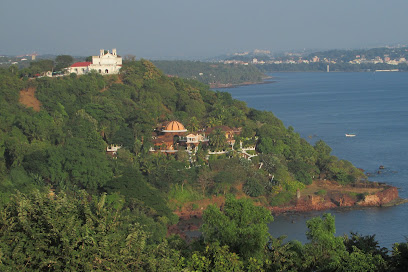
Aguad Port & Jail Complex
Discover Aguad Port & Jail Complex: A Heritage Jewel of Goa Blending History, Art, and Scenic Views.
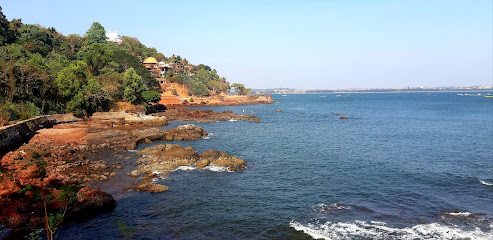
Sinquerim Fort view Point
Discover stunning coastal views and rich history at Sinquerim Fort View Point in Goa, a must-visit destination for every traveler.

Francoise beach
Discover the serene beauty of Francoise Beach in Candolim, Goa, where golden sands meet clear waters and vibrant local culture awaits.

Candolim Beach Entry Gate
Experience the beauty and tranquility of Candolim Beach Entry Gate, your gateway to unforgettable moments in Goa's coastal paradise.
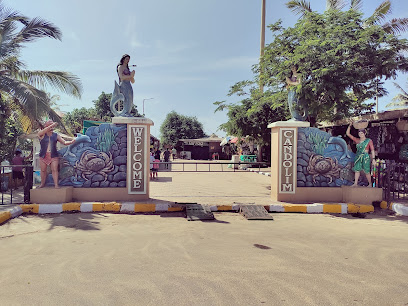
Essential places to dine
Palms n Sands Beach Restobar Candolim
Discover delicious Goan cuisine and refreshing drinks at Palms n Sands Beach Restobar in Candolim - a must-visit culinary destination.

Shivers Garden Bar & Restaurant Goa
Discover the vibrant flavors of Asia at Shivers Garden Bar & Restaurant in Goa – where culinary excellence meets enchanting ambiance.

Cafe Jazz
Experience authentic Goan flavors at Café Jazz in Candolim – where delicious cuisine meets a cozy atmosphere.
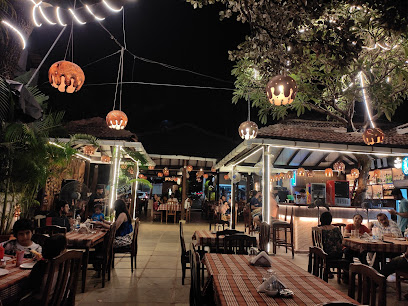
The Mango Grove Bar & Restaurant
Experience authentic Indian flavors at The Mango Grove Bar & Restaurant in Candolim - a perfect spot for breakfast and beyond.
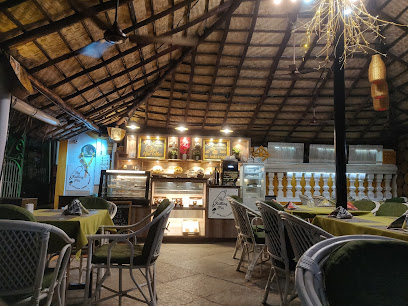
Karlton's Horizon Grill
Experience culinary delights at Karlton's Horizon Grill in Candolim - your go-to destination for barbecue favorites and family-friendly dining.

Bobby's Shack.com
Experience authentic Goan cuisine at Bobby's Shack on Candolim Beach—where flavor meets paradise!

ANGAARA– Bbq Grill & SPORTSBAR
Savor mouthwatering BBQ delights at ANGAARA – your go-to sports bar in Candolim, Goa offering diverse cuisines and vibrant ambiance.

Ryan Shack
Experience fresh seafood delights at Ryan Shack in Candolim, Goa – where every meal tells a story of coastal flavors.

Claudina's Shack
Discover the vibrant flavors of Goa at Claudina's Shack - your beachfront haven for breakfast and lunch.
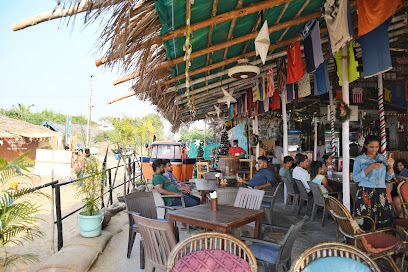
Grills N Curries
Discover authentic Indian flavors at Grills N Curries in Candolim, Goa - where every dish tells a story.

Markets, malls and hidden boutiques
The Flame Store
Explore The Flame Store in Candolim, Goa for unique designer clothing that blends contemporary and traditional styles, perfect for every fashion enthusiast.

Mahadev garments
Explore Mahadev Garments in Candolim, Goa for unique clothing that reflects local culture and style. A shopping haven for fashion enthusiasts.

Sheek Emporium - Armanii Boutique
Discover bespoke fashion and exquisite handicrafts at Sheek Emporium - Armanii Boutique in Goa, where style meets tradition.

Fabindia, Candolim, North Goa
Explore Fabindia in Candolim, a clothing store that offers a unique blend of traditional Indian textiles and modern fashion amidst the beauty of Goa.

A N unique perfume Goa
Discover exotic fragrances and unique scents at A N Unique Perfume, a hidden gem in Candolim, Goa, perfect for every fragrance lover.

Orange Oregano Apparel & Accessories
Explore vibrant fashion at Orange Oregano Apparel & Accessories, the perfect blend of local culture and contemporary style in Candolim, Goa.

Mintt
Discover exquisite leather goods at Mintt in Candolim, Goa - your go-to destination for bags, shoes, and clothing that blend style with traditional craftsmanship.

Mantra
Discover the latest trends in casual wear, footwear, and accessories at Mantra, your ultimate fashion stop in Candolim, Goa.

G & M Collections - Wholesale and Retail
Explore G & M Collections in Candolim for stylish beachwear and accessories that capture the essence of Goa's vibrant beach culture.

Flamingo - The Fashion Store (Candolim)
Discover trendy clothing and accessories at Flamingo - The Fashion Store in Candolim, capturing Goa's vibrant culture in every piece.

Essential bars & hidden hideouts
Mikey's Place Bar & Restaurant
Discover the lively Mikey's Place Bar & Restaurant in Candolim, Goa, where delightful cuisine meets vibrant ambiance and unique local-inspired cocktails.

Cohiba Bar & Kitchen
Experience the vibrant flavors of Goa at Cohiba Bar & Kitchen, where exquisite seafood and Goan specialties meet a lively atmosphere.

The Bigg Mouth Bar & Restaurant Goa
Discover the vibrant atmosphere and delectable cuisine at The Bigg Mouth Bar & Restaurant in Candolim, Goa - a perfect blend of fun and flavor.

LORD OF THE DRINKS
Discover the nightlife at Lord of the Drinks, a top lounge and disco club in Candolim, Goa, serving exquisite cocktails and vibrant entertainment.

Teama
Experience the vibrant essence of Goa at Teama, a family-friendly bar and restaurant serving exquisite Goan cuisine and refreshing drinks.
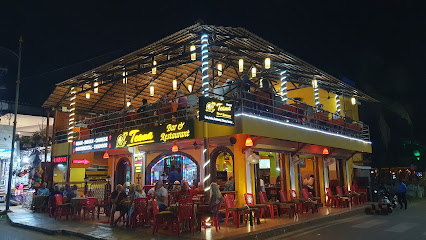
Coyote Bar & Restaurant
Experience the vibrant atmosphere and delicious cuisine at Coyote Bar & Restaurant in Candolim, Goa - perfect for families and beach lovers alike.

Morina Bar
Experience the vibrant nightlife of Goa at Morina Bar, where delicious cocktails and a lively atmosphere await you in Candolim.

Green Jacket Bar & Restaurant
Discover the lively vibe of Green Jacket Bar & Restaurant, where delicious cuisine meets a vibrant atmosphere near Candolim Beach in Goa.

Viva Lounge and Bar- Holiday Inn Goa Candolim
Discover the flavors of Goa at Viva Lounge and Bar, a stylish dining destination in Candolim offering a delightful fusion of local and international cuisine.

Martini Bar
Indulge in exquisite cocktails with breathtaking views at the Martini Bar in Goa's luxurious Taj Fort Aguada Resort & Spa.

Local Phrases
-
- Helloनमस्ते
[Namaste] - Goodbyeअलविदा
[Alvida] - Yesहाँ
[Haan] - Noनहीं
[Nahi] - Please/You're welcomeकृपया/आपका स्वागत है
[Kripaya/Aapka swagat hai] - Thank youधन्यवाद
[Dhanyavad] - Excuse me/Sorryक्षमा करें/माफ़ कीजिए
[Kshama karein/Maaf kijiye] - How are you?कैसे हो आप?
[Kaise ho aap?] - Fine. And you?ठीक हूँ। और आप?
[Theek hoon. Aur aap?] - Do you speak English?क्या आप अंग्रेजी बोलते हैं?
[Kya aap angrezi bolte hain?] - I don't understandमुझे समझ में नहीं आया
[Mujhe samajh mein nahi aaya]
- Helloनमस्ते
-
- I'd like to see the menu, pleaseकृपया मेनू दिखाना
[Kripaya menu dikhana] - I don't eat meatमैं मांस नहीं खाता/खाती
[Main maans nahi khaata/khaati] - Cheers!चियर्स!
[Cheers!] - I would like to pay, pleaseकृपया भुगतान करना है
[Kripaya bhugtan karna hai]
- I'd like to see the menu, pleaseकृपया मेनू दिखाना
-
- Help!मदद!
[Madad!] - Go away!चले जाओ!
[Chale jao!] - Call the Police!पुलिस को बुलाओ!
[Police ko bulao!] - Call a doctor!डॉक्टर को बुलाओ!
[Doctor ko bulao!] - I'm lostमैं खो गया/गई हूँ
[Main kho gaya/gayi hoon] - I'm illमुझे बीमारी है
[Mujhe bimari hai]
- Help!मदद!
-
- I'd like to buy...मुझे खरीदना है...
[Mujhe khareedna hai...] - I'm just lookingमैं बस देख रहा/रही हूँ
[Main bas dekh raha/rahi hoon] - How much is it?यह कितने का है?
[Yeh kitne ka hai?] - That's too expensiveयह बहुत महंगा है
[Yeh bahut mehnga hai] - Can you lower the price?क्या आप कीमत कम कर सकते हैं?
[Kya aap keemat kam kar sakte hain?]
- I'd like to buy...मुझे खरीदना है...
-
- What time is it?समय क्या हुआ है?
[Samay kya hua hai?] - It's one o'clockएक बजे हैं
[Ek baje hain] - Half past (10)(10) के बाद आधा
[(10) ke baad aadha] - Morningसुबह
[Subah] - Afternoonदोपहर
[Dopahar] - Eveningशाम
[Shaam] - Yesterdayकल
[Kal] - Todayआज
[Aaj] - Tomorrowकल
[Kal] - 1एक
[Ek] - 2दो
[Do] - 3तीन
[Teen] - 4चार
[Char] - 5पाँच
[Paanch] - 6छह
[Chhah] - 7सात
[Saath] - 8आठ
[Aath] - 9नौ
[Nau] - 10दस
[Das]
- What time is it?समय क्या हुआ है?
-
- Where's a/the...?...कहाँ है?
[...kahan hai?] - What's the address?पता क्या है?
[Pata kya hai?] - Can you show me (on the map)?क्या आप मुझे दिखा सकते हैं (नक्शे पर)?
[Kya aap mujhe dikh sakte hain (naksha par)?] - When's the next (bus)?अगली (बस) कब है?
[Agli (bus) kab hai?] - A ticket (to ....)एक टिकट (.... के लिए)
[Ek ticket (...ke liye)]
- Where's a/the...?...कहाँ है?
History of Candolim
-
Candolim's history dates back to the 16th century when it was a small fishing village. The name 'Candolim' is believed to derive from the word 'Khandolim', referring to the region's early agricultural practices. The area was significantly influenced by Portuguese colonization, which began in the early 1500s, leading to the construction of churches and the establishment of a vibrant local culture.
-
In 1612, the Portuguese constructed the Fort of Aguada, located at the mouth of the Mandovi River, to defend against Dutch and Maratha invasions. The fort played a crucial role in the protection of Candolim and the surrounding areas, serving as a lighthouse and military outpost. Its strategic position allowed it to control maritime trade routes and safeguard the Portuguese interests in Goa.
-
The blending of Portuguese and local Goan cultures is evident in Candolim, particularly in its architecture, cuisine, and festivals. The local population practices a mix of Hindu and Christian traditions, which can be seen in the vibrant celebrations of festivals like Carnival and Christmas, showcasing the region's diverse cultural heritage.
-
With the advent of the tourism boom in the 1960s, Candolim transformed from a quiet fishing village into a popular beach destination. The influx of tourists led to the development of hotels, restaurants, and recreational facilities. This shift not only boosted the local economy but also altered the social fabric of the community, creating a blend of traditional lifestyles and modern tourism.
-
In recent years, there has been growing awareness of environmental issues impacting Candolim, such as beach erosion and pollution. Local initiatives aimed at promoting sustainable tourism practices have emerged, focusing on preserving the natural beauty of the coastline while supporting the livelihoods of the local fishing community. This movement reflects a broader trend across Goa, as residents seek to balance economic growth with environmental stewardship.
Candolim Essentials
-
Candolim is located approximately 38 kilometers from Goa's Dabolim Airport. Taxis and app-based cabs like Uber and Ola are readily available for direct transfer. If coming from other neighborhoods like Calangute or Baga, local buses operate frequently, and you can also hire a motorcycle or scooter for a more flexible option.
-
Candolim is a walkable neighborhood with many attractions nearby. For longer distances, local buses are available, connecting you to major destinations in Goa. Taxis and auto-rickshaws are also common and can be hired for short trips. Renting a bicycle or scooter is a popular choice for tourists looking to explore at their own pace.
-
Candolim is generally a safe area for tourists; however, precautions are advisable. Avoid walking alone on the beach at night and keep valuables secure. Petty theft can occur, particularly in crowded areas. Areas like Anjuna and Vagator can have higher crime rates, so exercise caution when visiting these neighborhoods.
-
In case of emergency, dial 112 for police, fire, or medical emergencies. Local hospitals and clinics are available in Candolim and nearby areas. It is advisable to have travel insurance that covers medical emergencies. Pharmacies are also accessible for minor health issues.
-
Fashion: Do wear light, breathable clothing suitable for the tropical climate, but avoid overly revealing outfits when visiting religious sites. Religion: Do respect local customs; remove shoes when entering temples. Public Transport: Do be polite to fellow passengers and remember to give up your seat for the elderly. Don't engage in loud conversations. Greetings: Do greet locals with a friendly 'Namaste'. Eating & Drinking: Do try local Goan cuisine, but don't drink tap water; always opt for bottled water.
-
To experience Candolim like a local, spend time at the beach during sunset to mingle with residents. Visit local markets for fresh produce and handmade crafts. Explore the lesser-known beaches like Sinquerim for a quieter atmosphere. Participate in local festivals if your visit coincides, as they provide a deeper insight into Goan culture.









